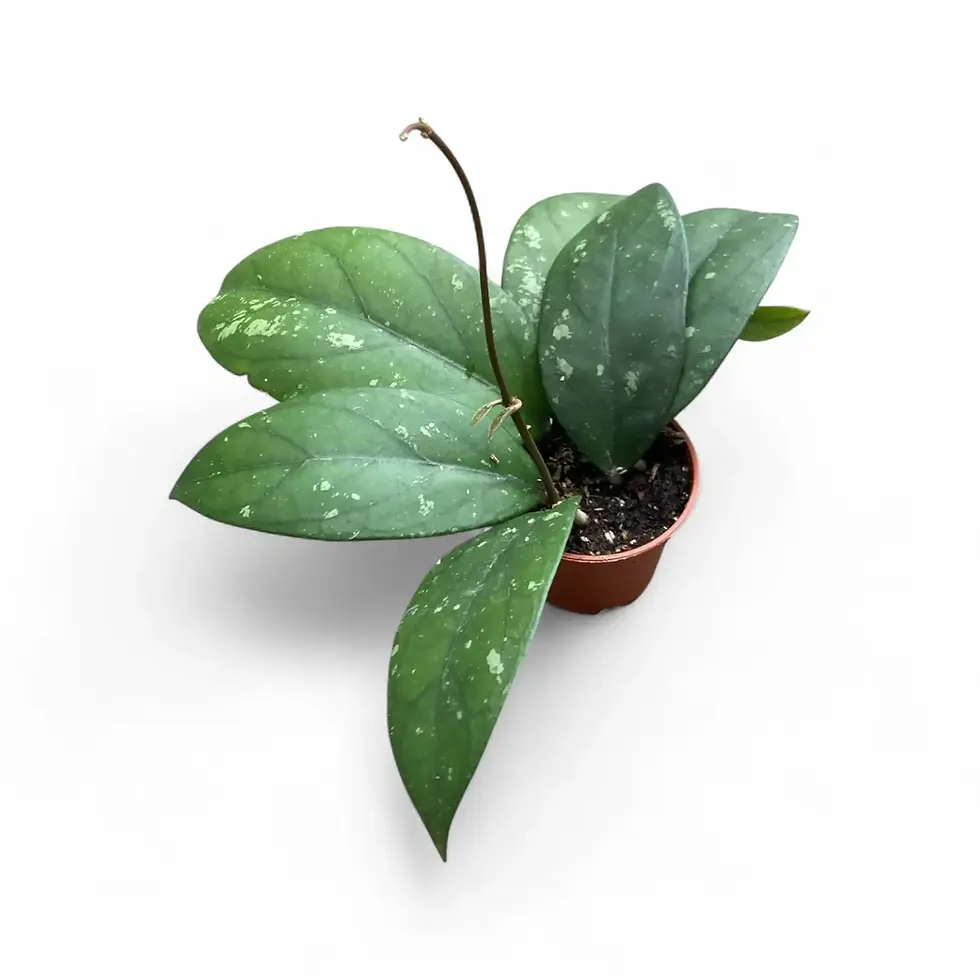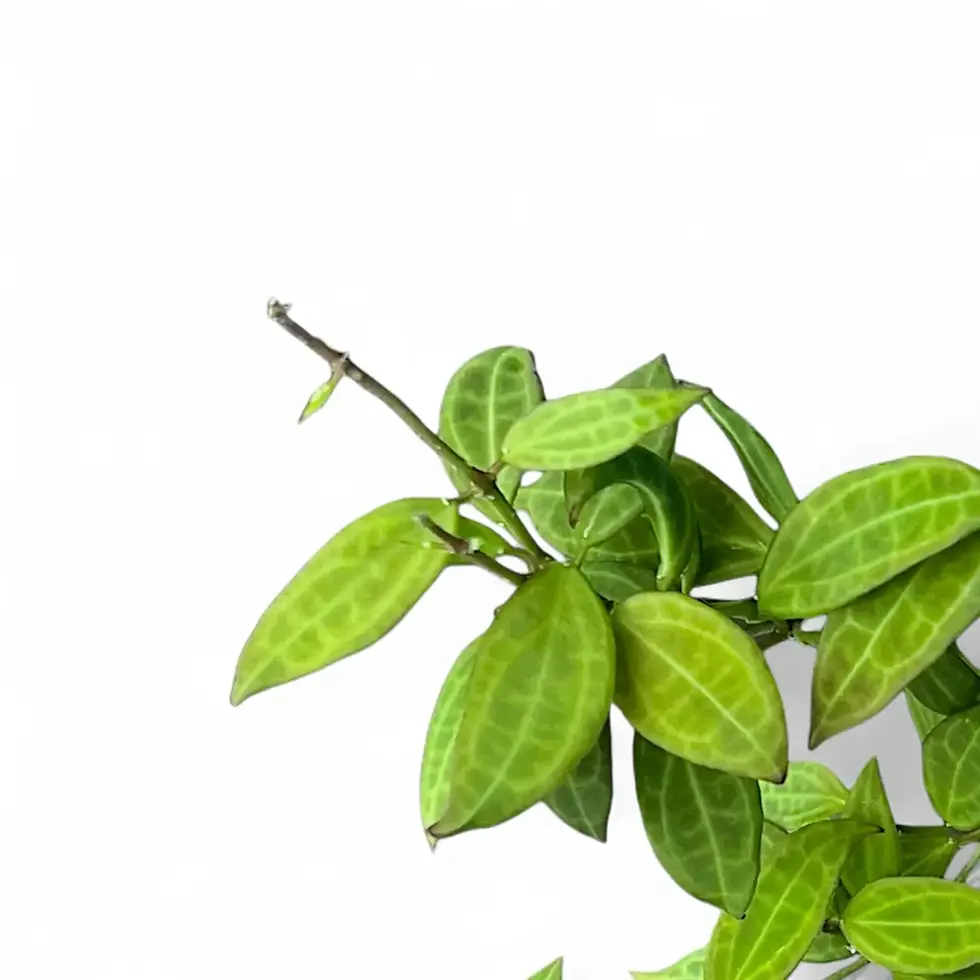Philodendron billietiae variegata – Rare Tricolor Aroid with Orange Petioles and Climbing Growth
Philodendron billietiae variegata is a sought-after mutation of Philodendron billietiae, combining intense orange petioles with unpredictable, cream-toned variegation across elongated, rippled leaves. Each new leaf emerges with a unique blend of pale yellow, lime, and forest green, often displaying bold sectoral contrasts or intricate marbling. The semi-glossy upper surface and rich texture give the plant a dramatic, sculptural presence — especially when supported vertically. This is not a fast plant, but every leaf rewards patience with character. Rare in cultivation and even rarer in stable form, this variegated billietiae stands out in any serious collection.
What Makes Philodendron billietiae variegata So Unique?
- Leaf Shape: Long, arrow-like leaves with wavy edges and sharp tips
- Color Pattern: Cream and yellow marbling on green; every leaf is genetically distinct
- Stems and Petioles: Bright orange, grooved petioles add contrast and color intensity
- Mature Leaf Size: Can exceed 60–90 cm with proper care and climbing support
- Texture: Semi-gloss top, matte underside; new growth may emerge with copper tones
Origin and Botanical Context
The base species, Philodendron billietiae, was discovered in French Guiana and formally described by Thomas B. Croat in 1995. It grows as a hemiepiphyte along tree trunks at 300–700 m elevation, in high-humidity rainforest understories. The variegated cultivar emerged in cultivation through chimeric mutation and does not occur naturally. Its variegation results from cellular-level instability, meaning each clone may behave differently — some remain stable over years, others revert to green unpredictably. This makes each plant both rare and genetically singular.
Indoor Growing Tips for Philodendron billietiae variegata
- Light: Needs bright, indirect light; avoid harsh midday sun
- Temperature Range: Ideal indoor range is 18–25 °C; avoid cold air or sudden drops
- Humidity: 60–80% is preferred for optimal foliage expansion and leaf health
- Watering: Water only when top 2–3 cm of soil is dry; use pots with full drainage
- Substrate: A chunky mix with bark, perlite, pumice, and coir supports root health
- Feeding: Monthly with a balanced liquid fertilizer containing magnesium and calcium
- Support System: Grows best with a moss pole or trellis to encourage upright form
- Pot Type: Terracotta or ceramic pots with drainage recommended for airflow and balance
Variegation Behavior and Growth Notes
- Growth Speed: Slower than the non-variegated form, but steady in consistent conditions
- Juvenile vs Mature: Young leaves may show less color; mature foliage becomes more defined
- Chimerism: Variegation is caused by unstable cell layers — not influenced by light intensity
- Managing Reversion: Remove green-only growth to encourage active variegated nodes
How to Propagate and Maintain This Plant
- Propagation: Use cuttings with visible variegation and one node; root in moss or semi-hydro substrate
- Leaf Care: Clean leaves gently with a damp cloth to avoid dust buildup and enhance gas exchange
- Pruning: Trim older, yellowing, or reverted leaves to direct energy into new growth
Troubleshooting Common Growth Issues
- Root Rot: Caused by poor drainage or soil compaction — use airy substrate and water less frequently
- Green-Only Leaves: Common in unstable clones; remove to redirect growth to variegated points
- Washed-Out Color: May signal nutrient imbalance — supplement with Mg/Ca and avoid overfeeding
- Pest Risk: Watch for spider mites and thrips; treat early with neem or insecticidal soap
- Cold Damage: Brown or wilted leaf edges often result from drafts or temperature drops
Your Questions About Philodendron billietiae variegata
- Why is my Philodendron billietiae variegata reverting? Reversion is genetic — prune green-only growth and provide stable care to support variegated nodes.
- What’s the best soil mix for this variegated climber? A coarse blend with orchid bark, perlite, and pumice supports healthy roots and avoids compaction.
- How do I know if my clone is stable? If several consecutive leaves show good patterning, it's likely stable — but no variegated clone is ever 100% fixed long-term.
Etymology and Naming
Philodendron billietiae was named by botanist Thomas B. Croat in 1995, honoring Marie-Jeanne Billiet — a Belgian botanist known for her work on South American aroids. The cultivar name “variegata” refers to its unpredictable cream-and-yellow variegation, which arises from chimeric tissue layers and is maintained only through clonal propagation.
Order Philodendron billietiae variegata today and bring a genetic masterpiece into your collection — where every new leaf is a fresh surprise.
Philodendron billietiae variegata
Philodendron billietae variegata is approximately 25 cm tall and comes in a ⌀ 10.5 cm pot































